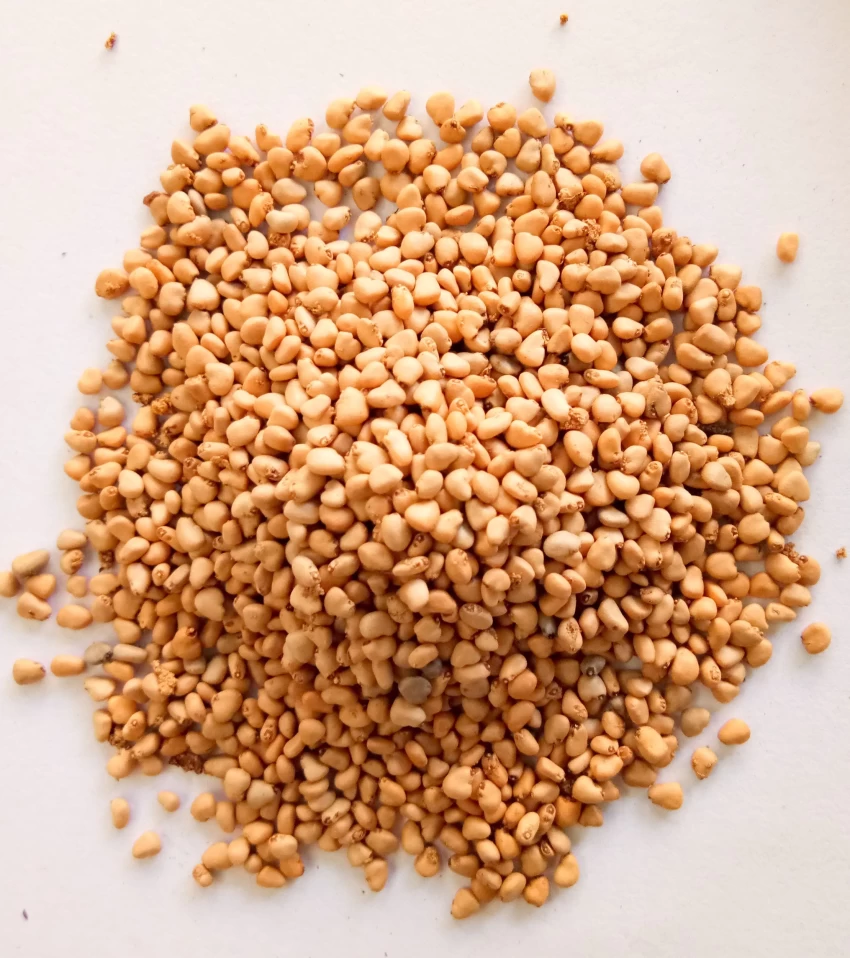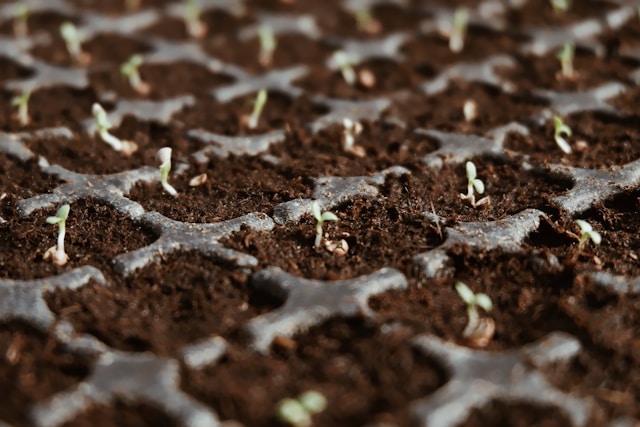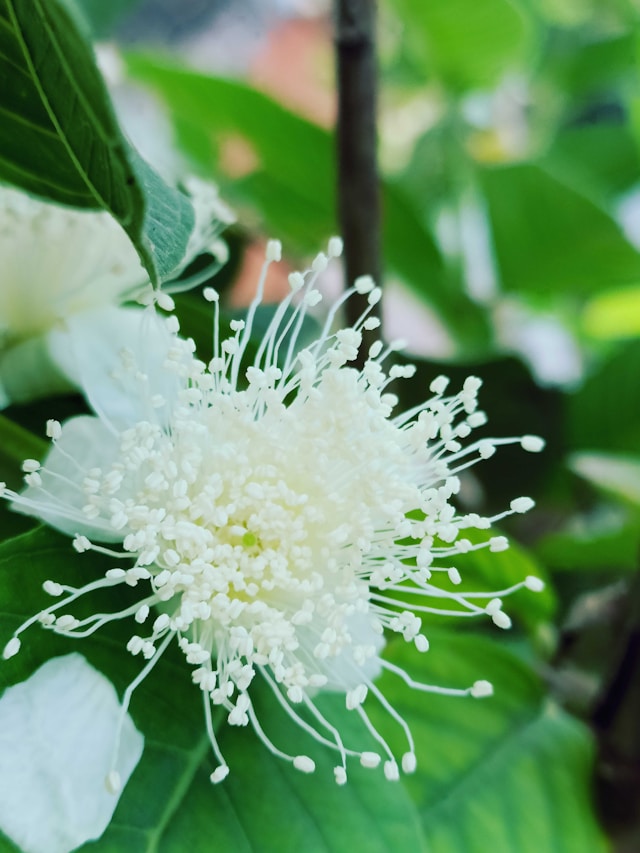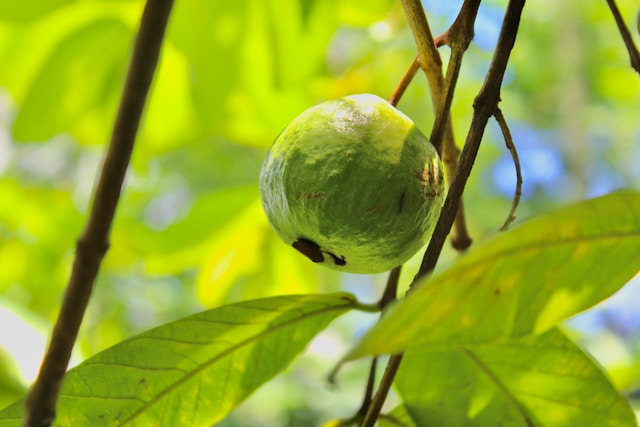Guava is a heathy and delicious tropical fruit that can be grown at home, even from seeds. Though it requires patience, the reward is a healthy guava tree that produces sweet fruit for years to come. We’ll take you through how to grow guava from a seed, from seed extraction to planting and caring for your growing tree.
Step 1: Seed Extraction and Preparation
To begin with, you’ll need a ripe guava. The riper the fruit, the better the seeds will germinate.
Extracting the Seeds
- Cut the guava open and scoop out the seeds from the center. You can use a spoon or your fingers to remove them gently.
- Place the seeds in a water bowl and rub them between your fingers to remove the sticky pulp. Rinse the seeds thoroughly in clean water.
Soaking the Seeds
Guava seeds have a tough outer shell, which can slow germination. Soak the seeds in warm water for 24 hours to speed things up. This softens the outer layer and helps them sprout more quickly.

Step 2: Planting the Guava Seeds
Once your seeds are prepped, it’s time to plant them. Guava seeds do best in well-draining
Choosing the Right Container
You can start your guava seeds in a seed tray or small pots. Make sure the containers have drainage holes to allow excess water to escape.
Planting the Seeds
- Fill the tray or pots with well-draining
soil . - Plant each seed about half an inch deep into the
soil . - Lightly water the
soil until it’s damp but not soaking wet. - Cover the container with plastic wrap to create a greenhouse effect. This traps moisture and warmth, helping the seeds germinate faster.
Step 3: Germination
Guava seeds take their time to germinate, usually anywhere from 2 to 8 weeks. During this period, it’s important to keep the conditions right.
Ideal Growing Conditions
- Sunlight: Place the container in a warm spot with indirect sunlight. Avoid direct sunlight at this stage, as it can dry out the
soil too quickly. - Moisture: Keep the
soil moist by misting it regularly with water. However, don’t let thesoil become waterlogged, as this can lead to mold or rot.
Patience Pays Off
Germination times can vary based on the variety of guava and growing conditions. Be patient, as it might take a few weeks to see the first signs of growth.

Step 4: Transplanting the Seedlings
Once your guava seedlings have grown a few inches tall and developed several sets of leaves, they are ready to be transplanted. At this stage, they need more space and light to continue growing strong.
When to Transplant
Typically, you’ll want to transplant the seedlings when they are around 4-6 inches tall. This is a good time to move them to a larger pot or directly into the ground if your climate allows.
Choosing the Right Spot
Guava trees thrive in full sunlight, so make sure you plant them in a spot that gets plenty of sun. If planting outdoors, ensure the
Transplanting Steps
- Gently remove the seedling from its container, taking care not to damage the roots.
- Place it in a hole that is slightly larger than the root ball, whether in a pot or directly in the garden.
- Fill the hole with
soil , lightly press down to secure the plant, and water it well.
Step 5: Caring for Your Guava Tree
After transplanting, guava trees need regular care to grow into healthy, fruit-bearing plants. Here are the critical aspects of guava care:
Watering
Water your guava tree regularly, especially during the first year of growth. However, guava trees don’t like soggy
Sunlight and Temperature
Guava trees love the sun. Make sure they get 6-8 hours of direct sunlight each day. If you live in a tropical or subtropical climate, guava trees can be planted outdoors and will thrive in warm temperatures. In cooler climates, guava trees do best in pots that can be moved indoors during colder months.
Fertilizing
To encourage healthy growth, fertilize your guava tree every few months during the growing season (spring and summer). Use a balanced fertilizer rich in nitrogen, phosphorus, and potassium to support leaf and root development.
Pruning
Guava trees benefit from regular pruning to promote bushier growth and remove any dead or damaged branches. Prune your tree after the growing season to encourage better air circulation and fruit production.
When Will My Guava Tree Bear Fruit?

Growing guava from seed requires patience, as it can take 3-4 years for your tree to start bearing fruit. However, once it starts producing, you can enjoy fresh guavas for years to come!
FAQ: How to Grow Guava from a Seed
1. How long does it take to grow guava from a seed?
Guava seeds typically take 2-8 weeks to germinate, but the tree may take 3-4 years to bear fruit.
2. Do I need to soak guava seeds before planting?
Yes, soaking guava seeds in warm water for 24 hours softens the seed coat and increases the chances of successful germination.
3. What kind of
Use well-draining
4. How much sunlight do guava plants need?
Guava plants thrive in full sunlight, needing at least 6-8 hours of direct light per day.
5. How often should I water guava seedlings?
Water the seedlings regularly, keeping the
Conclusion
Growing guava from a seed may take some time, but the process is rewarding. From selecting the right seeds to caring for the seedlings, each step brings you closer to enjoying your own homegrown guava fruit. With the right care—plenty of sunlight, well-draining
Happy gardening!

Brian is an avid gardener who loves spending time outdoors. He is passionate about using his green thumb to create beautiful, lush gardens for her friends and family. He finds joy in tending to her garden, trimming plants, and cultivating new species. He enjoys to share his knowledge and experience with others with a similar gardening enthusiasm. Brian is a true nature enthusiast and a has true passion for the outdoors.




